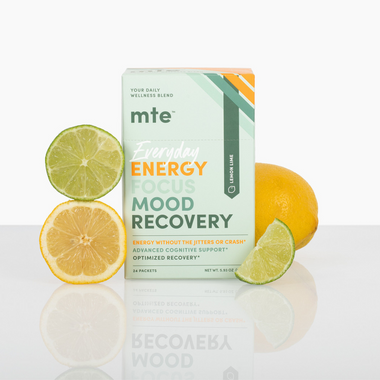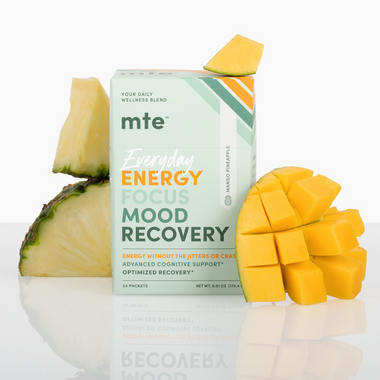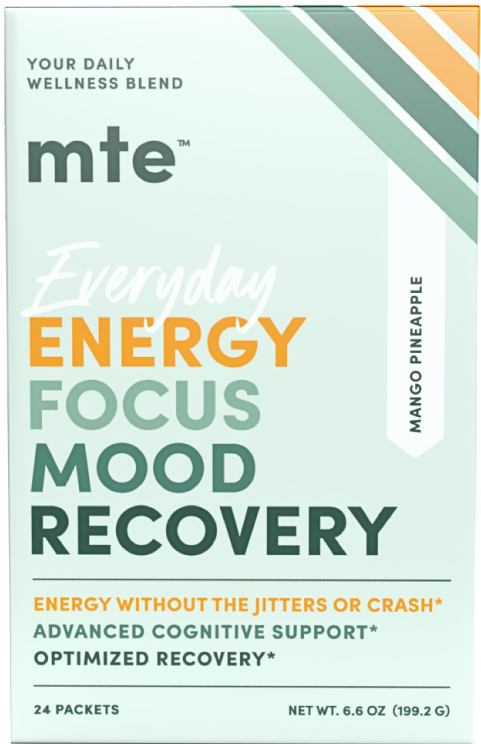
The Future of Pre-Workout Supplements: Why Paraxanthine Is Replacing Caffeine
Caffeine has been the go-to pre-workout supplement for years thanks to its effects on alertness, endurance, and fat oxidation. But this stimulant is far from perfect.
Caffeine can make you feel jittery or hit a post-workout crash. Some people even experience heart palpitations, stomach discomfort, or restless sleep, which, ironically, slow down muscle recovery and hurt gains in the long run.
While searching for a better way to fuel our bodies, scientists stumbled on paraxanthine, a caffeine metabolite that delivers all the perks without the nasty side effects. In this article, we break down why paraxanthine is a superior pre-workout supplement to caffeine and how to use it for maximum performance benefits.
Why Caffeine Has Been the Gold Standard for Pre-Workout Energy
From bodybuilders to endurance athletes, caffeine has been a staple pre-workout ingredient for decades. It’s found in everything from energy drinks to fat burners because it works.
Multiple studies confirm caffeine’s ability to improve physical and mental performance, which is why it’s one of the most widely used ergogenic aids in sports.
Here’s how it helps people reach their performance goals:
1. Faster Reaction Time and Sharper Focus
Caffeine switches your brain into high gear by blocking adenosine (the neurotransmitter responsible for making you feel tired) while increasing cortisol and adrenaline levels.
As a result, you experience better concentration, faster reaction times, and improved mental clarity, all of which are crucial whether you’re hitting a heavy squat PR or making split-second decisions in a high-intensity sport.
2. More Power and Strength
Ever feel like your lifts are just more explosive after a shot of espresso? That’s because caffeine increases power output and muscle strength.
This stimulant enhances neuromuscular function, allowing your muscles to contract more forcefully, which is why many powerlifters, weightlifters, and CrossFit athletes rely on it before a big session. In simple terms: more weight, better reps, bigger gains.
3. Increased Endurance and Delayed Fatigue
If you’ve ever powered through a long-distance run, cycling session, or grueling HIIT workout only because of caffeine, you’re not imagining things. Caffeine increases fat oxidation, which means your body burns fat for fuel instead of tapping into its limited glycogen stores.
These effects help you maintain steady energy levels for longer workouts, which reduces the chances of early fatigue and burnout.
4. Fat-Burning Benefits
Caffeine is a powerful thermogenic. It increases calorie burn at rest and during exercise, which helps with fat loss. That’s why it’s a common ingredient in fat burners and weight-loss supplements.
If you’ve ever noticed that your morning coffee makes you feel warmer or sweat a little more during workouts, that’s caffeine kicking your metabolism into overdrive.
The Downsides of Caffeine-Based Pre-Workouts
Caffeine is one of the most researched and effective pre-workout ingredients, but it’s far from perfect. While it delivers explosive energy, sharper focus, and endurance boosts, many lifters, athletes, and gym-goers experience unwanted side effects that can actually work against them.
If you’ve ever felt jittery mid-workout, crashed hard after training, or struggled to fall asleep after an evening session, you already know what we’re talking about.
The most common caffeine downsides include:
1. Jitters, Anxiety, and Increased Heart Rate
Caffeine increases adrenaline and cortisol levels, which puts your body into a mild fight-or-flight mode. While a small boost in alertness can be great, too much can leave you feeling wired, jittery, and even anxious – not exactly ideal when you need steady control over your lifts.
Another problem is that some people are more sensitive to caffeine than others, so even a moderate dose can trigger racing heartbeats, restlessness, and even panic-like symptoms.
2. The Crash: Short-Lived Energy That Leaves You Drained
Caffeine provides a short-lived energy spike, but once it wears off, it can leave you feeling exhausted, sluggish, and mentally foggy. That’s because caffeine doesn’t create energy. It just blocks adenosine, the neurotransmitter that makes you feel tired. Once the caffeine clears out, that built-up adenosine floods your system, hitting you with a wall of fatigue.
This adenosine overflow is a major problem for people who train in the morning because instead of feeling energized throughout the day, they’re stuck battling afternoon crashes.
3. Stomach Issues and GI Discomfort
If you’ve ever taken a scoop of pre-workout and immediately felt your stomach turn, you’re not alone. Caffeine is a natural laxative and stomach irritant, especially when taken on an empty stomach. Many people experience:
- Acid reflux
- Bloating and discomfort
- Sudden trips to the bathroom (which is the last thing you need mid-workout)
If you already deal with acid reflux, IBS, or general gut sensitivity, a high-caffeine pre-workout can cause more problems than it solves. Instead, you can go for an IBS caffeine alternative that is much gentler on the stomach but provides the same boost.
4. Sleep Disruptions That Hurt Recovery
Caffeine stays in your system for hours. The half-life of caffeine is about 5-6 hours, which means that if you take a pre-workout at 5 PM, half of it is still in your body at 11 PM.
Too much caffeine in your body is a problem because it prevents you from getting that deep, restorative sleep crucial for muscle recovery and growth. Poor sleep = slower gains, worse recovery, and subpar gym performance the next day.
Sleep = Gains. And if caffeine is cutting into your deep sleep, it’s working against your progress.
5. Tolerance Buildup
If you’ve ever noticed that your usual scoop of pre-workout stops hitting as hard, that’s because your body is building a tolerance.
Caffeine works by blocking adenosine, but over time, your brain creates more adenosine receptors to compensate. As a result, you need higher doses to get the same effect, which can quickly spiral into dependence, withdrawal headaches, and other side effects.
What Is Paraxanthine? The Cleaner Nootropic
Paraxanthine is one of caffeine’s primary metabolites, so your body naturally converts caffeine into paraxanthine after digestion. More than 80% of the caffeine you consume turns into paraxanthine. The rest breaks down into the less desirable theobromine and theophylline, which are linked to side effects like increased heart rate, anxiety, and gut irritation.
Scientists have discovered that paraxanthine alone delivers the benefits we want from caffeine (energy, focus, endurance) without the drawbacks. It stimulates dopamine and cAMP production and interacts with specific adenosine receptors, which improves mental and physical performance but doesn’t overstimulate the nervous system like caffeine does.
Paraxanthine is starting to gain traction in competitive gaming and high-performance sports because of its many benefits:
Better Cognitive and Physical Performance
Research suggests paraxanthine is better at boosting cognitive function than caffeine. A study published in Nutrients found that paraxanthine improves reaction time and reduces cognitive errors. This improvement is a game-changer for activities that require quick decision-making, such as sprinting, competitive sports, or even esports.
In addition, this nootropic helps with attention shifting, impulse control, and executive function, which are crucial for maintaining focus and precision under pressure.
A 2024 study published in the Journal of the International Society of Sports Nutrition found that runners who consumed paraxanthine performed better, had lower perceived exertion, and maintained steady energy levels longer compared to those using caffeine.
Like caffeine, paraxanthine promotes fat oxidation, so your body can burn fat for fuel more efficiently during exercise. This thermogenic effect is beneficial for endurance athletes or anyone looking to train in a fasted state without feeling sluggish.
Unlike caffeine, paraxanthine can impact nitric oxide production, which plays a crucial role in improving blood flow and aerobic performance. Increased blood flow means better oxygen and nutrient delivery to muscles, which can lead to prolonged endurance, lower fatigue, and improved cardiovascular health.
Thanks to these effects, paraxanthine appears to have a more balanced effect on circulation and doesn’t spike blood pressure like caffeine.
Finally, caffeine can increase post-exercise inflammation and interfere with recovery, while paraxanthine may have lower oxidative stress markers. That means less soreness, faster recovery, and more effective muscle repair, which is a huge advantage if you’re training hard and want to avoid performance plateaus.
No Jitters or Anxiety
Feeling like a god for 30 minutes only to start vibrating like a broken controller is pretty much what caffeine jitters feel like in action. That’s because caffeine overstimulates your nervous system, triggering shaky hands, an anxious mind, and that all-too-familiar “why am I on edge for no reason?” sensation.
Paraxanthine doesn’t spike cortisol and adrenaline the way caffeine does. Instead, it promotes smooth, focused energy, meaning you can lift heavy, sprint faster, and stay locked in without feeling like your heart is about to bail on you mid-set.
In addition, paraxanthine interacts with adenosine receptors differently than caffeine. Since these receptors are located in different areas of the brain, their activation (or lack thereof) could explain why paraxanthine delivers energy without the jitters or anxiety that caffeine is notorious for.
Beyond its performance benefits, paraxanthine may also have a better safety profile compared to caffeine.
While research is still emerging, studies suggest it carries lower toxicity, causes less DNA damage, and has reduced cell toxicity compared to caffeine. It also appears to have a lower potential for addiction or dependency. In preclinical studies, paraxanthine showed no observed adverse effects, even at high doses.
Sustained Energy Without a Crash
Once caffeine’s effects wear off, all built-up adenosine floods your system at once, which makes you feel even more exhausted than before.
Paraxanthine provides a more sustained energy boost by fine-tuning neurotransmitter activity and supporting dopamine balance. In addition, your body metabolizes paraxanthine more efficiently because it doesn’t have to process the additional byproducts of caffeine (like theobromine and theophylline), which are linked to jitters, fatigue, and disrupted sleep.
Instead, paraxanthine delivers a controlled release of mental and physical energy to keep you dialed in longer without the rollercoaster ride of peaks and crashes.
No Impact on Sleep – More Gains
Caffeine might give you a solid pre-workout boost, but it also overstays its welcome, lingering in your system for up to 10 hours or more. That means if you’re training in the afternoon or evening, you might still be overstimulated when it’s time to wind down.
And since muscle growth and recovery happen during deep sleep, messing with your sleep cycle can seriously slow your progress.
In comparison, your body clears paraxanthine more quickly, so there’s a lower chance that it will interfere with your sleep.
Interestingly, paraxanthine might even have anxiolytic (anti-anxiety) effects. Stress and an overactive mind make it harder to wind down, stay asleep, and enter deep restorative sleep stages. If paraxanthine helps promote a calmer state, it could support not just better focus during training but also better recovery at night.
At the end of the day, better sleep = better recovery = more muscle gains. So, if you want to optimize performance without wrecking your sleep schedule, paraxanthine is a smarter choice.
How to Use Paraxanthine as a Pre-Workout for Maximum Performance
If you want to get the most out of paraxanthine before your workouts, here are some science-backed tips to optimize its effects:
1. Take It 30-60 Minutes Before Training
Like caffeine, paraxanthine peaks in the bloodstream within an hour after consumption. To ensure it’s fully active when you hit the gym, take your dose about 30-60 minutes pre-workout. Good timing will help you feel focused, energized, and ready to perform by the time you start your first set.
Pro Tip: If you work out first thing in the morning, wait at least 30-45 minutes after waking up before taking paraxanthine to allow your body enough time to get into its natural energy rhythms.
2. Stack It With Beta-Alanine for Endurance
If your workouts involve high-rep strength training or endurance sports, consider pairing paraxanthine with beta-alanine. Beta-alanine helps buffer lactic acid buildup, reducing muscle fatigue and delaying exhaustion.
Combining beta-alanine with a nootropic like paraxanthine can lead to higher power output and a longer time to exhaustion. That means more reps, heavier lifts, and better endurance in cardio-based workouts.
How to use it: Take 3-6g of beta-alanine daily, ideally with your paraxanthine dose for optimal synergy.
3. Stay Hydrated for Better Performance
Dehydration is one of the biggest performance killers. Even a 1-2% drop in hydration can lead to significant strength and endurance losses.
Paraxanthine supports nitric oxide production, which helps with blood flow and oxygen delivery, but it works best when paired with proper hydration.
How to optimize hydration pre-workout:
- Drink at least 16-20 oz (500-600ml) of water with your paraxanthine dose.
- Add electrolytes (sodium, potassium, magnesium) for better hydration retention.
- Avoid excessive diuretics (like high-dose caffeine) that can dehydrate you before training.
Bonus tip: If you sweat a lot or train for over an hour, sip on electrolyte water during your workout to maintain peak performance.
4. Pair It With Creatine for Strength and Power
Creatine is one of the most studied and effective performance supplements, known for its ability to increase ATP production, improve muscle strength, and enhance recovery. Stacking it with paraxanthine brings additional focus and endurance, which is the perfect combo for strength training and high-intensity workouts.
How to use it: Take 3-5g of creatine daily, ideally mixed with your paraxanthine pre-workout drink or post-workout shake for maximum absorption and muscle saturation.
5. Time Your Last Dose to Protect Sleep
One of the biggest performance hacks is actually getting better sleep, and paraxanthine enhances performance without sacrificing recovery.
To maximize performance without disrupting sleep:
- If you train early in the day, you can take paraxanthine without worry.
- If you train in the evening, take your last dose at least 6–7 hours before bed to ensure it doesn’t interfere with melatonin production.
- If you’re extra sensitive to stimulants, consider pairing it with calming nootropics for sleep like L-theanine or GABA.
6. Combine It With Citrulline Malate for Better Blood Flow and Pump
Citrulline malate is an amino acid that boosts nitric oxide production, which supports blood flow, oxygen delivery, and nutrient transport to working muscles. Taking this supplement can result in bigger pumps, better endurance, and reduced fatigue.
Since paraxanthine has been shown to potentiate nitric oxide neurotransmission, combining it with citrulline malate could increase this effect even further.
How to use it: Take 6-8g of citrulline malate 30-60 minutes before training with your paraxanthine dose.
Upgrade Your Pre-Workout with Paraxanthine Drink Powder
If caffeine-based pre-workouts have been holding you back with jitters, crashes, and restless nights, it’s time to switch to paraxanthine. This nootropic delivers clean energy, sharper focus, and endurance-boosting effects without the downsides of caffeine.
By incorporating paraxanthine into your nootropic pre-workout stack, alongside key performance enhancers like creatine, beta-alanine, and citrulline malate, you can push harder, recover faster, and see real gains without sacrificing sleep or long-term health.
Looking for an easy way to experience the benefits? Try our daily wellness blend, powered by paraxanthine, nootropics, and adaptogens, for sustained energy, focus, and recovery without the crash.






